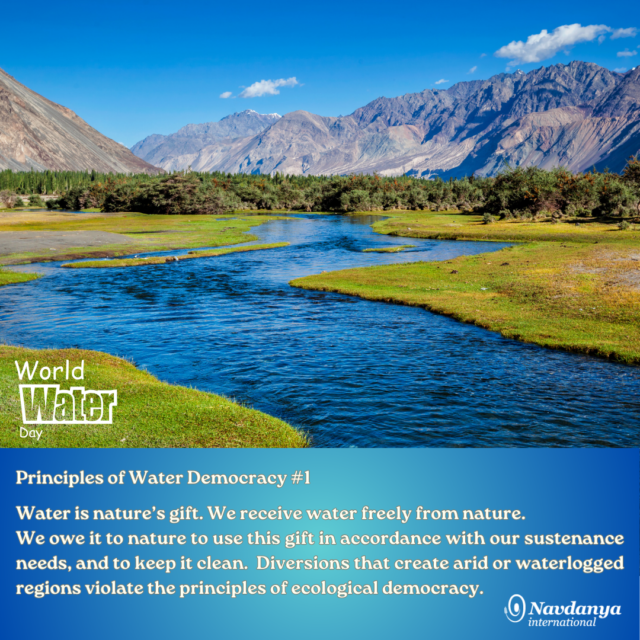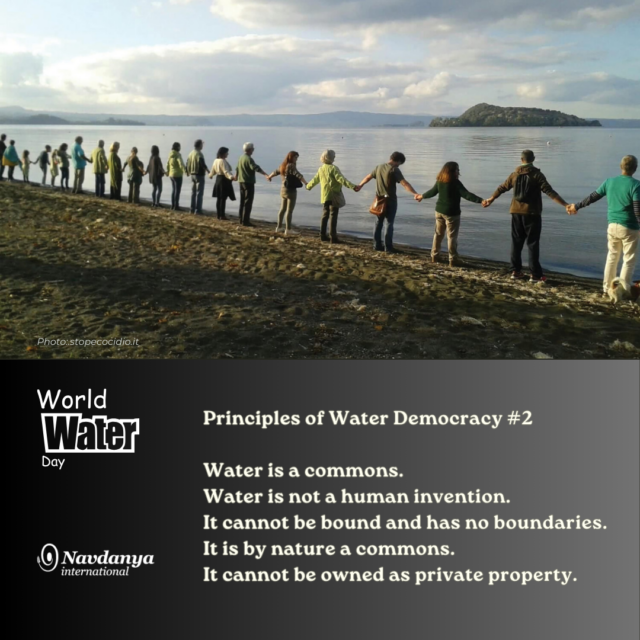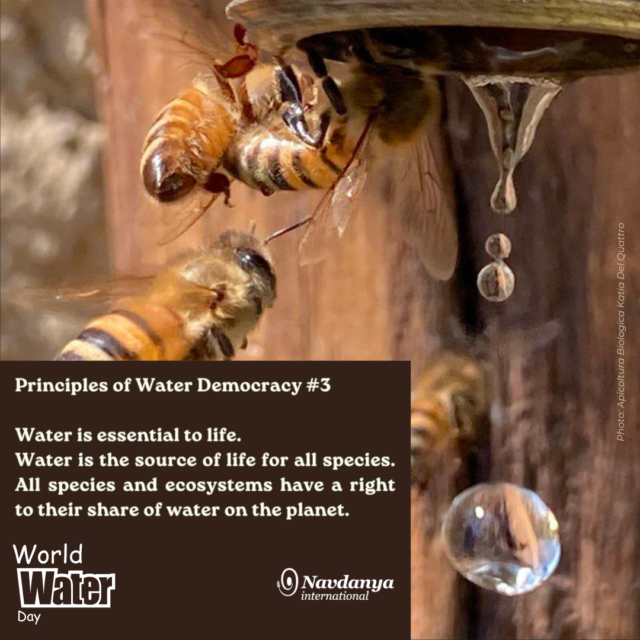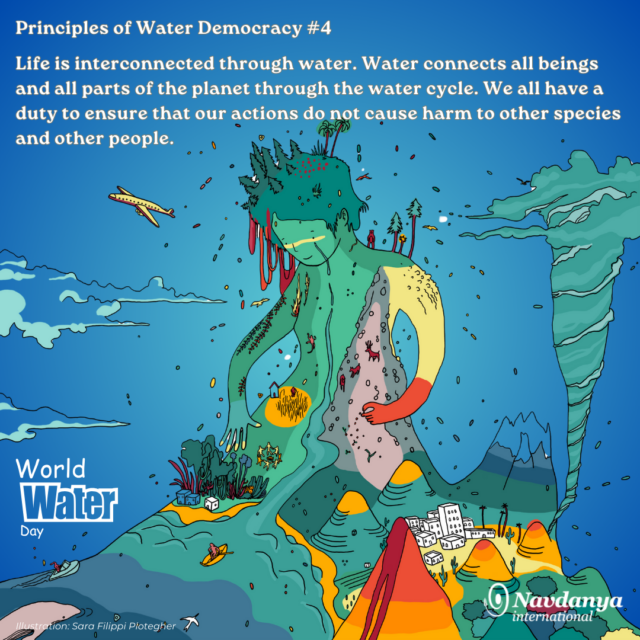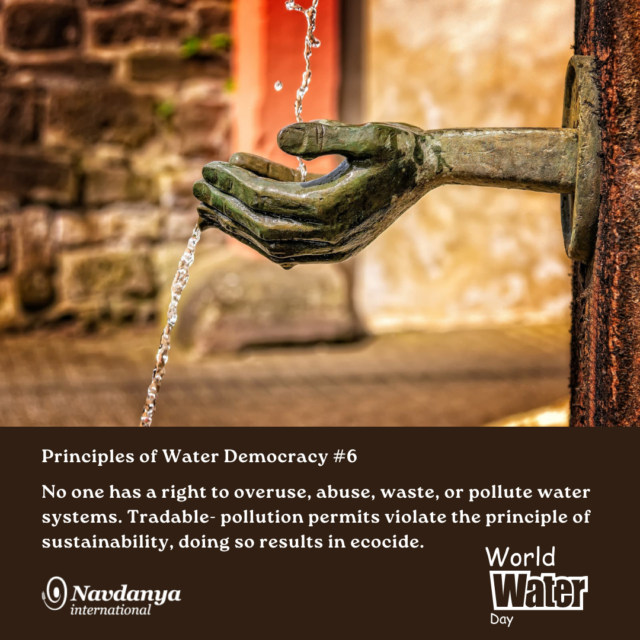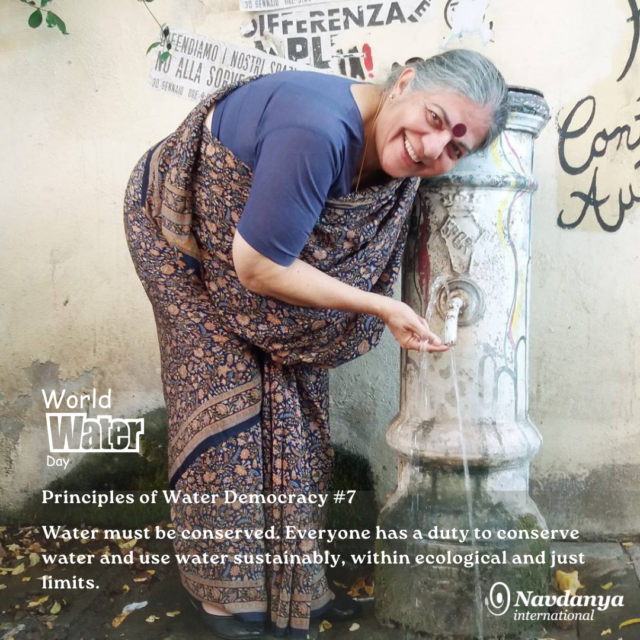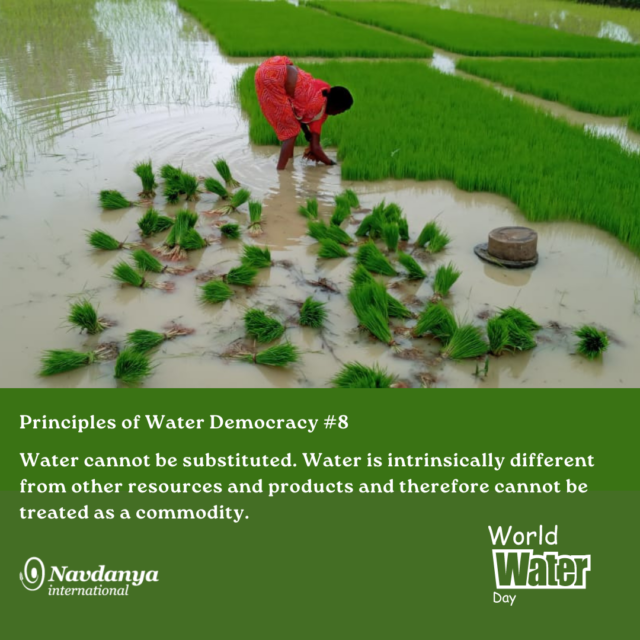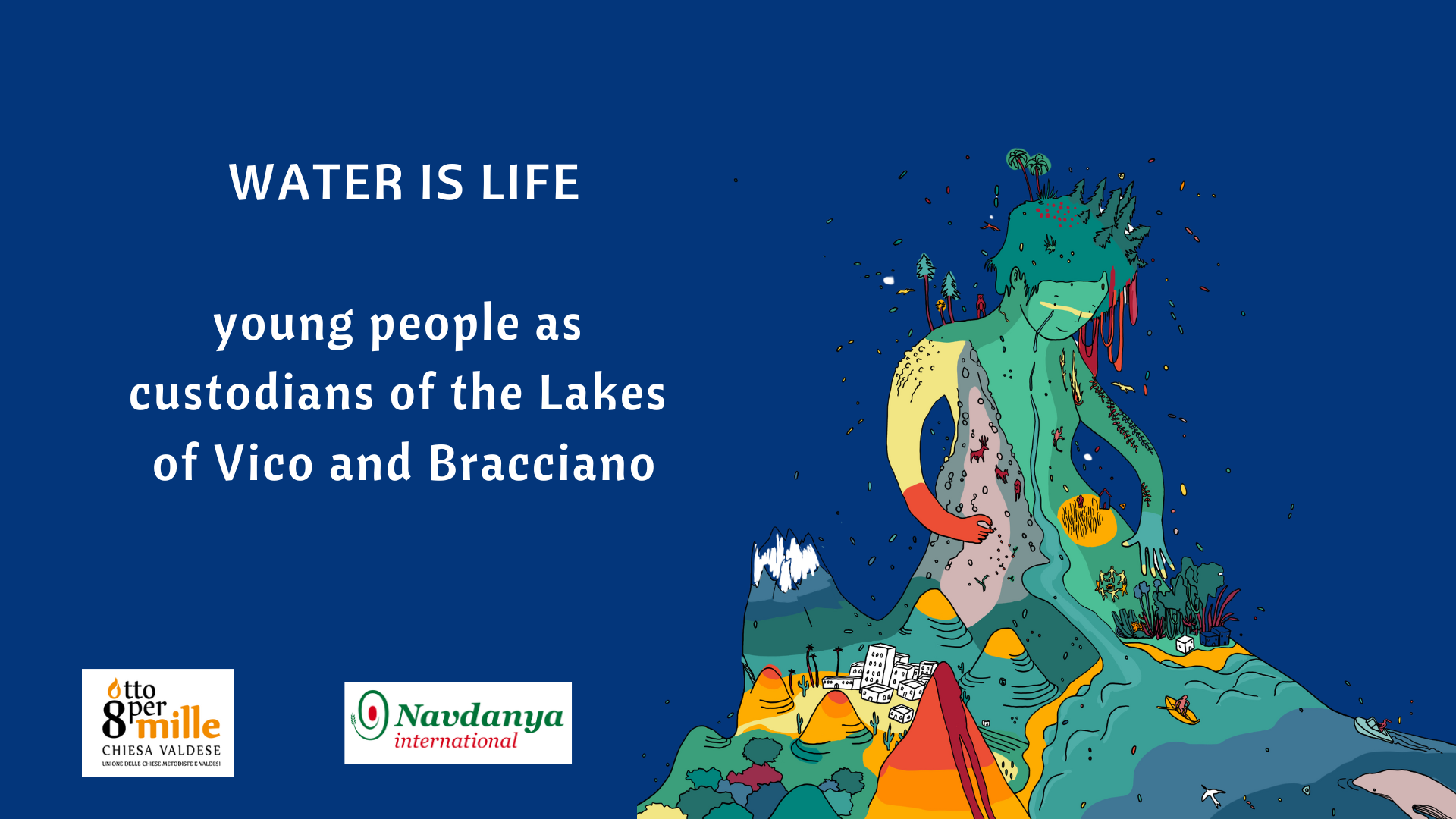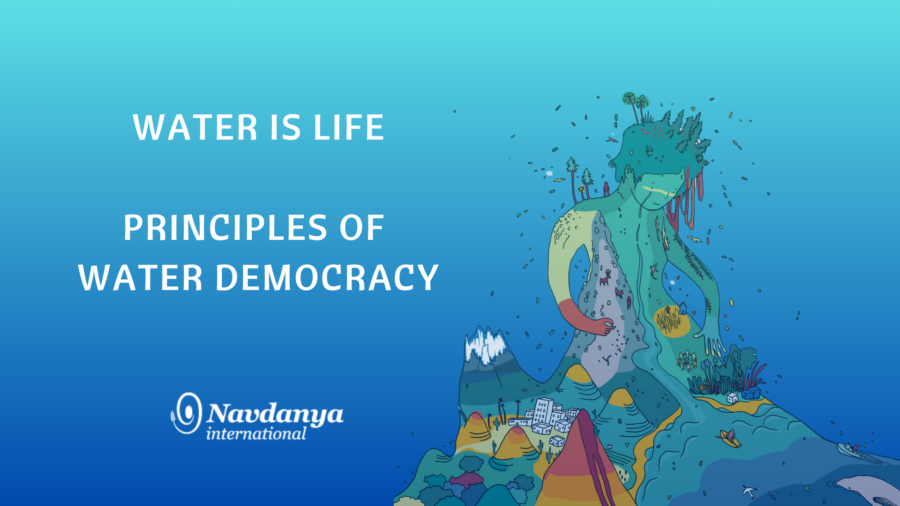
Water is an essential commodity for life. The balance and health of all ecosystems on the planet depend on the water cycle. Today this fundamental source of life is increasingly at risk. Over the past 100 years, global water use has increased about sixfold, with growth that will continue to rise steadily at a rate of 1 percent per year, due to population growth, economic development, climate change and current consumption patterns.
We are facing a water crisis and water scarcity is increasing across the world as anthropogenic greed pollutes and grabs water resources. In many places, water is considered a commodity that can be bought, sold, and traded like any other resource. This approach to water management has led to environmental degradation, social conflicts, and violations of Indigenous peoples‘ rights.
The cultivation of monocultures in industrial agriculture has resulted in the infringement of human rights to access water. In many areas, water resources have been diverted from local communities and indigenous peoples to irrigate large-scale monoculture farms. Legal recognition of the rights of Indigenous peoples and local communities to water is essential for ensuring that their voices are heard in decision-making processes in the conservation of water. Ultimately, recognizing the legal status of water as a basic human right and a common heritage of humanity is crucial for protecting the environment and securing the well-being of future generations.
To address this issue, there needs to be a shift towards biodiversity based farming practices that respects the rights of water by following ecological and regenerative principles that prioritise the conservation of of soil and water.
The human right to water is a fundamental right that is essential for the realization of all human rights.
“Principles of Water Democracy” from: Water Wars: Privatization, Pollution and Profit, Vandana Shiva, North Atlantic Books (2016 reprint); 192 pp.; ISBN 978-1623170721.
Also read
Water is life: young people as custodians of the Lakes of Vico and Bracciano

